INDEPENDENT DAMP SURVEYS
WHITE KNIGHT provides unbiased, independent damp surveys that ascertain the root cause of your damp issue and reliably advises on solutions to your problem.
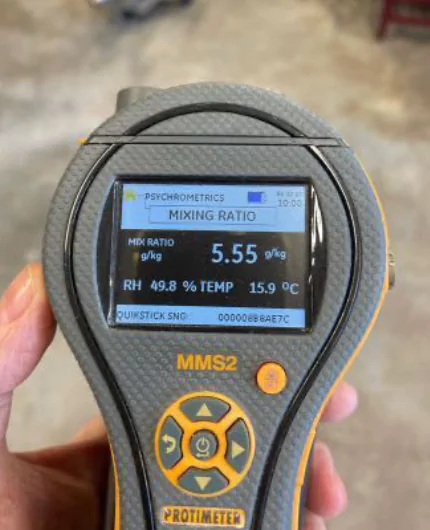
Overview of Damp Surveys
What is our Damp Survey process?
The moisture survey involves using specialist meters to gauge the level of moisture in the specified areas and materials within the building structure and to verify the cause of the excess moisture and issues that have presented themselves (for example, any evidence of condensation / damp / mould). The survey will be conducted by our expert damp consultants.
We also complete an inspection of the internal and external building structure, looking for defects or damage in brickwork and other possible sources of moisture ingress. Our initial surveys are non-invasive.
However in the case of a leak or less obvious source of moisture, we may recommend an invasive investigation. Only If we deem it necessary to find the cause of your issue. Please note, we will not carry this out without your explicit instructions and approval.
Where there are biohazards, recommendations by a medical professional or health concerns of the policy holder. We offer an extensive environmental survey that tests for the Indoor Air Quality, swab tests for Microbial Activity and other various lab services.
Importance of a Damp Survey
By accurately identifying the cause of your damp problem, a precise scope of works can be produced if any further remedial works are required. This can save you from spending money on unnecessary works and give you peace of mind knowing that your damp issues is being handled in the most efficient and cost effective manner.
Additionally, damp and timber surveys are important in the home-buying process. Mortgage lenders often request a damp and timber survey to ensure that the property is free from excess moisture. However if an issue is identified, the report can be used to determine and aide future decisions made on purchasing the property.
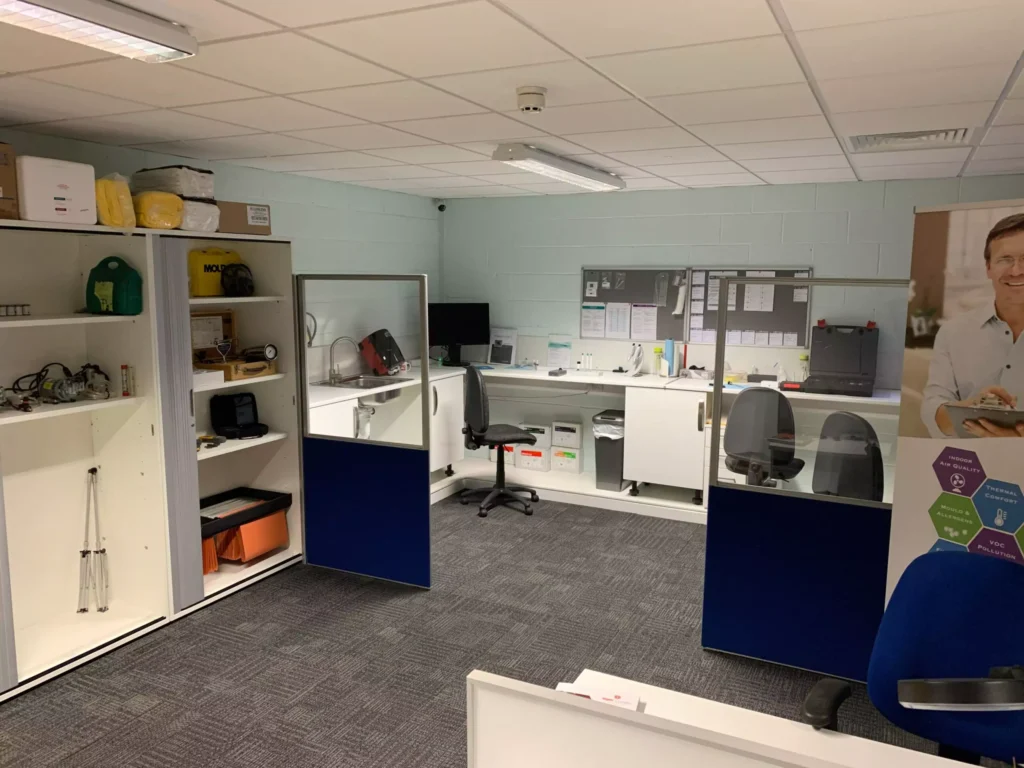
Choosing a Damp surveyor
We at WHITE KNIGHT maintain IICRC Certified Firm status through ongoing training and strict adherence to the international standards of the ANSI/IICRC S500:2021 and ANSI/IICRC S520:2015 and are international members of the AIHA. So you can be assured that we are industry-leading damp consultants.
Environmental and sustainability factors are also of paramount importance to us, as we strive to reduce waste and minimise our carbon footprint. We are proud to be UKAS ISO 9001:2015 and ISO 14001:2015 accredited, demonstrating our commitment to having a comprehensive integrated management system that helps us to achieve our quality and environmental / sustainability goals.
Types of Damp
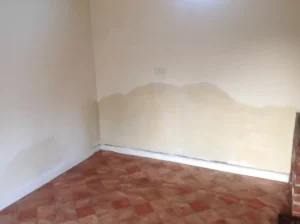
Rising Damp
Damp is a common problem that can affect buildings, causing mould, rot, and structural damage. This condition is most commonly found in older properties with solid walls, and is often caused by moisture rising from the ground. This can be addressed with structural repairs and/ or improvements based on a exhaustive inspection prior.
Rising damp is a type of dampness that occurs when ground moisture ascends through porous building materials, such as brick or masonry walls. This upward movement of water is typically caused by capillary action, where the water is drawn into the small spaces within the building materials against the force of gravity.
Common indicators of rising damp include damp patches or staining on walls, often starting from the base and moving upwards. As the water rises, it can lead to the deterioration of plaster, the appearance of tide marks, and in some cases, contribute to the growth of mould. Rising damp is more prevalent in older buildings where a damp-proof course (DPC), a barrier designed to prevent the upward movement of moisture, may be compromised.
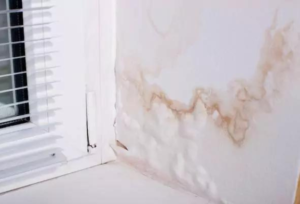
Penetrating Damp
Penetrating damp is a form of dampness that occurs when water infiltrates a building from the outside. Unlike rising damp, which typically originates from the ground, penetrating damp results from water entering through walls or roofs due to external factors. Common causes include defects in the building’s structure, such as cracks in walls, faulty roofing, damaged gutters, or poorly sealed windows and doors.
Rainwater, for instance, may find its way through gaps or weaknesses in the building’s exterior, leading to damp patches on internal walls. The moisture penetration can vary in severity, and if left unaddressed, it may result in issues such as mould growth, staining, and structural damage.
Identifying and rectifying the source of the water ingress is crucial in managing penetrating damp. This often involves conducting thorough inspections, repairing any structural defects, improving the building’s waterproofing measures, and, in some cases, applying protective coatings to external surfaces. Addressing penetrating damp promptly is essential to prevent further damage and maintain a healthy indoor environment.
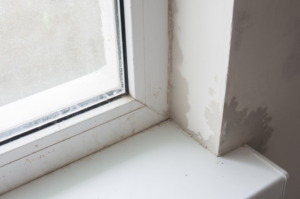
Condensation
Condensation is the result of water vapour in the air condensing on surfaces. This can happen in a variety of situations, but the most common ones are when there is too much humidity in the air, or when surfaces are cold. Damp can cause mould to grow, damage paint and wallpaper, and even cause electrical problems.
Condensation issues can be prevented by keeping your home well ventilated, this is especially important in areas of high moisture such as the kitchen and bathroom. If opening doors and windows is not possible, you may consider installing extractor fans or using a dehumidifier to remove any excess moisture.
In homes, condensation is often noticeable on windows, especially during colder seasons. When warm indoor air containing moisture comes into contact with the cold surface of a window, the air cools down, and the moisture condenses into water droplets on the glass. This process can contribute to dampness-related issues, as excessive condensation may lead to damp patches, mould growth, and other problems.
To manage condensation and its associated dampness, homeowners can take several measures. These include improving ventilation within the home, using extractor fans in kitchens and bathrooms, ensuring proper insulation to reduce temperature differences between indoor and outdoor surfaces, and employing moisture-absorbing materials or devices. Adequate ventilation is particularly crucial in spaces prone to high humidity, as it helps to expel moist air and prevent the conditions conducive to condensation and subsequent damp-related problems.
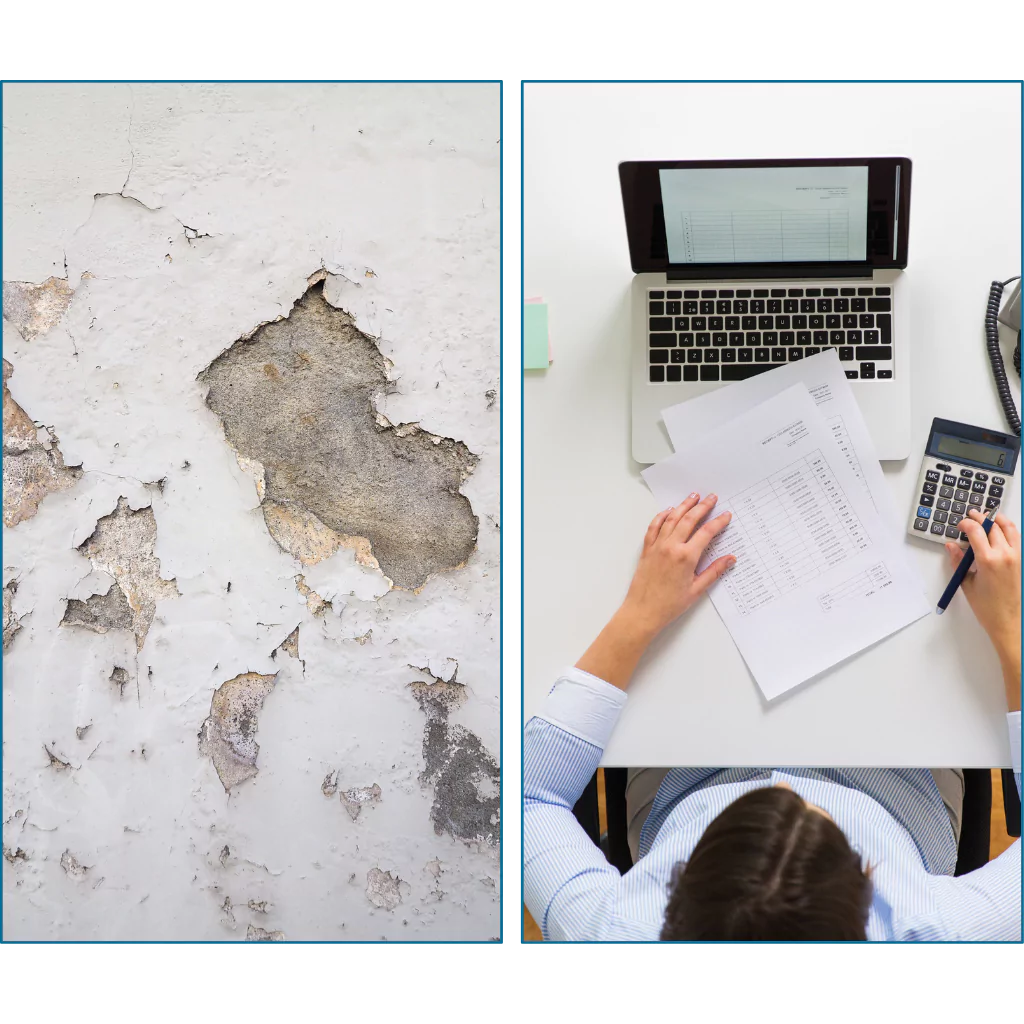
The damp Report
Following the survey you will be provided with a written technical report which includes an explanation of what has been done, any relevant test results and recommendations for any required remedial works / actions. The report is supported with photographic evidence that will be captured on site.
Our reports are recognised and respected throughout the industry and act as a valuable source of information for homeowners, landlords, major insurance companies and other official bodies. For any remedial work that can be undertaken by ourselves we will obviously be happy to provide an explanation and estimate. We will also highlight any areas that may require additional trades (if needed), and can make recommendations for tradespeople such as damp proofing and damp proof course . The written report should be available 7-10 working days after the survey has been completed.
